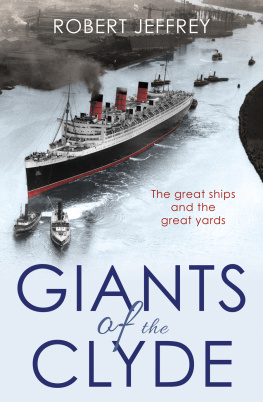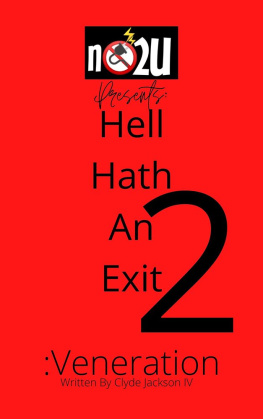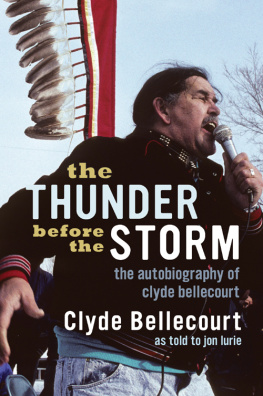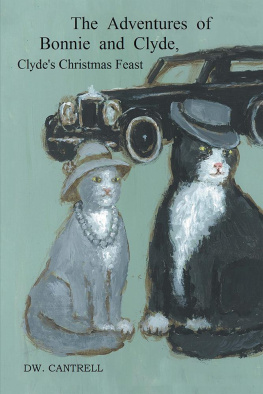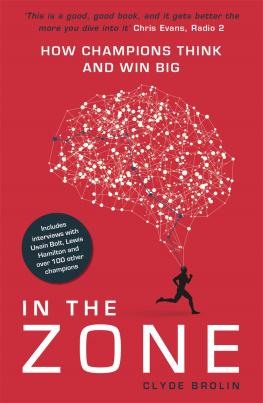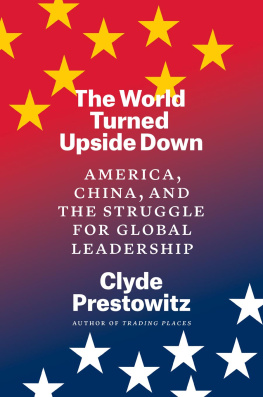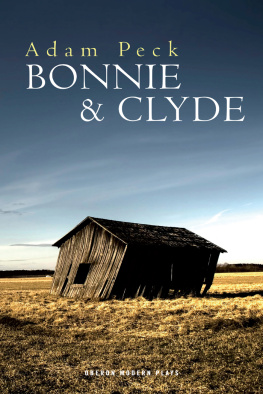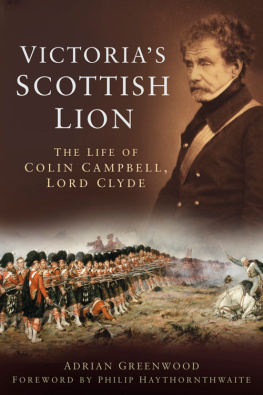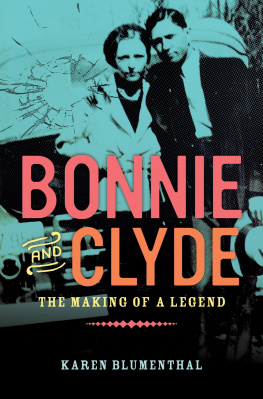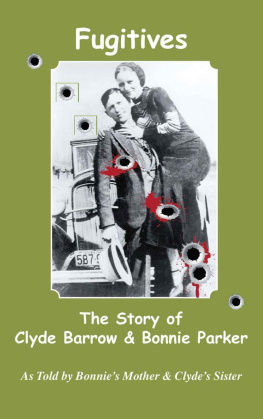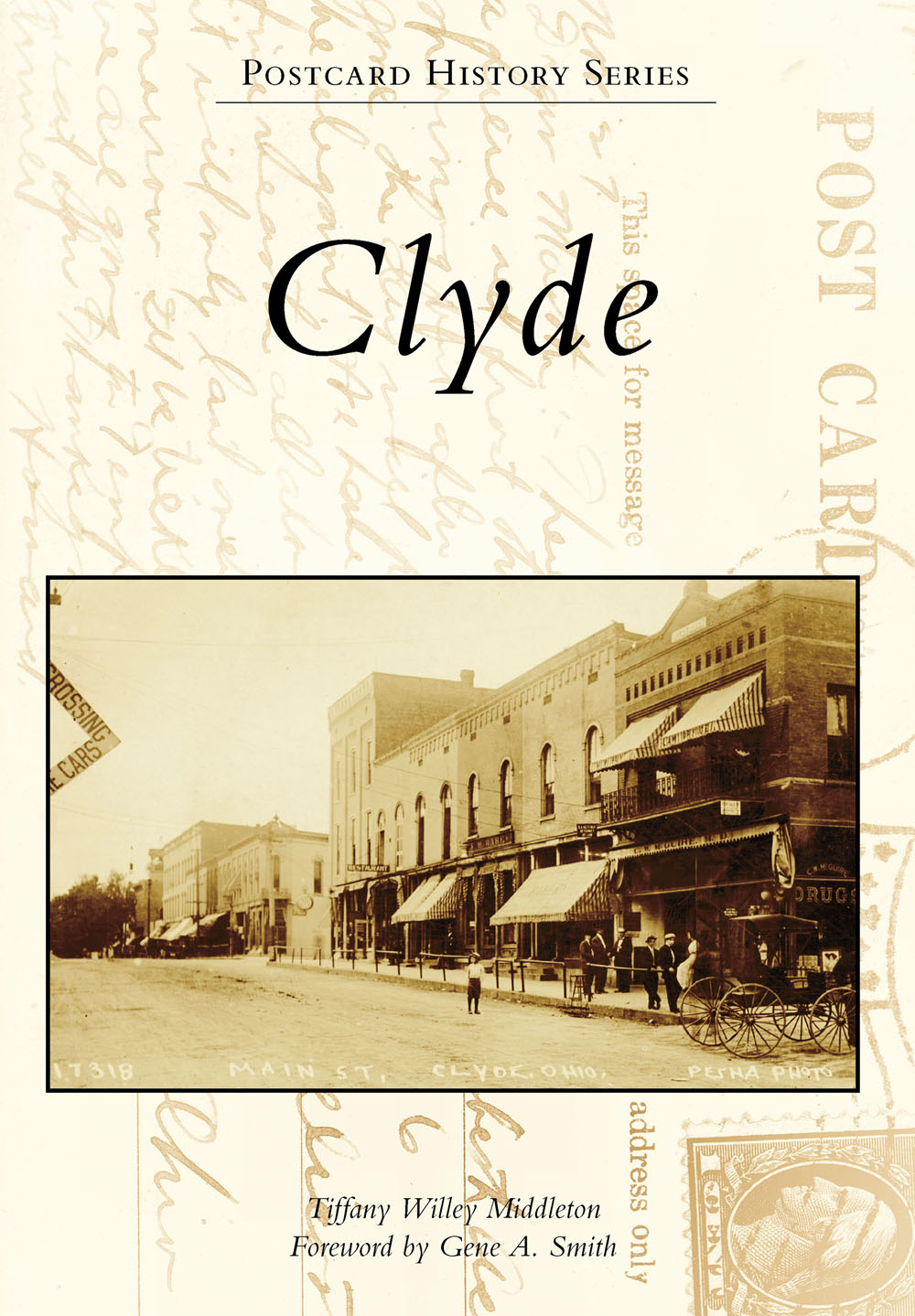
POSTCARD HISTORY SERIES
Clyde
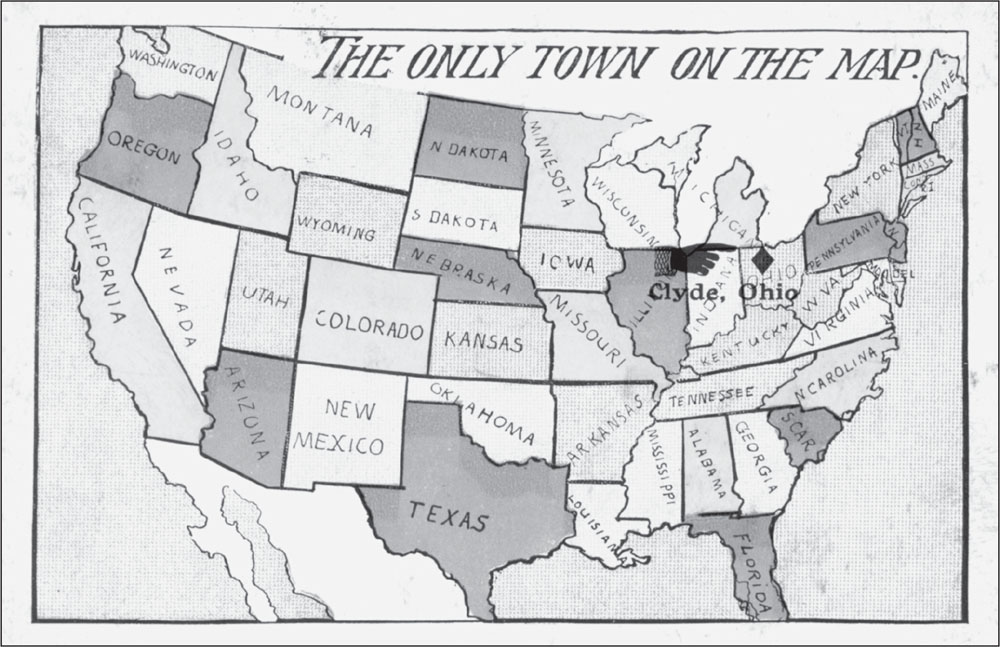
A promotional postcard printed in approximately 1910 points to Clyde, Ohio, as the only town on the map. The postcard not only places the city of Clyde geographically, it also provides a window into an era of postcard popularity. ( John Sanford.)
ON THE FRONT COVER: This postcard view of Clydes Main Street looks south from the railroad tracks toward the intersection with Maple Street; it shows a vibrant and bustling downtown in the early 20th century. ( John Sanford.)
ON THE BACK COVER: This undated postcard shows a track meet that took place at the fairgrounds in Clyde with a track team from nearby Sandusky, Ohio. The fairgrounds were located on the present-day site of Community Park. ( John Sanford.)
POSTCARD HISTORY SERIES
Clyde
Tiffany Willey Middleton
Foreword by Gene A. Smith

Copyright 2017 by Tiffany Willey Middleton
ISBN 978-1-4671-2670-0
Ebook ISBN 9781439661987
Published by Arcadia Publishing
Charleston, South Carolina
Library of Congress Control Number: 2017932816
For all general information contact Arcadia Publishing at:
Telephone 843-853-2070
Fax 843-853-0044
E-mail
For customer service and orders:
Toll-Free 1-888-313-2665
Visit us on the Internet at www.arcadiapublishing.com
To everyone in Clyde who collects or is inspired by old postcards; and to Jonas and Abigail, always steadfast cheerleaders.
CONTENTS
FOREWORD
Deltiology is a word that is probably uncommon to many people, but it is a term that refers to the collection and study of postcards. Collecting postcards is considered one of the largest global collecting hobbies, surpassed only by collecting coins and stamps. The popularity of collecting postcards can be ascribed to a variety of factors, most notably their subjects, which can be almost anything. Postcards are available in most parts of the world. They are probably one of the most popular forms of souvenirs bought by travelers and have been a primary means of staying in contact with family and friends while traveling. They may be mailed with low-cost postage, offering a snapshot of ones environs while traveling to anyone else in the world.
Postcards offer great value and significance to researchers and enthusiasts who are interested in the iconography of communities, regions, and indigenous peoples. Postcards are preserved by museums, libraries, historical societies, genealogical societies, archives, and individuals because of their importance in research. They freeze in time how a community, businesses, schools, and other organizations looked, and they provide a reference point to show how they have changed over time. They can show how people dressed, lived, worked, and experienced their communities. Postcards also became an economical means of advertising for businesses and various types of organizations. Postcards are much more than just a pretty picture on a cardthey are glimpses into our past that exhibit how we have changed as a people and a society both domestically and globally. This book shows how people dressed, lived, and worked in Clyde, Ohio, and provides a window into how our town has evolved over time into the very American community that it is today.
Gene A. Smith
Curator, Clyde Museum
ACKNOWLEDGMENTS
This postcard history about Clyde, Ohio, is the result of a team of generous librarians, archivists, researchers, and collectors who all lent their help and encouragementand postcardsto me for this project. They all deserve thanks. Thank-yous go to the postcard providers: the Clyde Museum and private collectors/Clyde residents Randy Dick, John Sanford, and Paula Renfro. Thankyous go to Gene A. Smith at the Clyde Museum, Brenda Stultz, and the Clyde Heritage League for supporting the project. After Randy, John, and Paula opened their postcard collections, Jill McCullough, then at the Clyde Public Library, scanned them all so that they could be digitized, shared, and workable for this project.
A thank-you goes to Dorothy Cox for providing immensely helpful initial research about practically every postcard she touched and writing it all down for me. I could hear her voice as I read her notes, and that was simply wonderful. Thanks go to Lynn Monday for managing Dorothys research, providing additional images, and answering so many questions. Additional thanks go to the Clyde Public Library, Nan Card and the Hayes Presidential Library and Museums, Lily Burkheimer and the Ohio History Connection, and James Semon.
Several digital archives were used to research captions in this book and, in some cases, provided public domain images and quotable quotes. The archive of the Clyde Enterprise; Clyde city directories from 1887, 1908, and 1913; the City of Clydes list of McPherson Cemetery interments; the catalog at Old Ohio Schools; the database of the Library of Congress, and histories available through archiving giants Internet Archive and Google Books all proved invaluable. Certain published local histories served as resources; they are Twentieth Century History of Sandusky County, Ohio and Representative Citizens, by Basil Meek, published in 1909; A History of Northwest Ohio, volumes I, II, and III, by Nevin Winter, published in 1917; and These Things Stay By You, published in 1966 by the Whirlpool Corporation.
Final thanks go to everyone at Arcadia Publishing, for answering questions, offering help and edits, and generally encouraging me to keep this project on track.
INTRODUCTION
This is a book about Clyde, Ohio. Clyde is a community located in northwest Ohio less than one hour southeast of Toledo and two hours northwest of Columbus. At the time of the 2010 census, the citys population was approximately 6,300 people. This is also a book of postcards, the distinctive pieces of mail that appear in mailboxes around the world and have come to inspire collectors. Most of the postcards in this book span a time period between 1900 and 1960 and provide a window into the buildings, homes, and everyday life in Clyde during the first half of the 20th century.
The city of Clyde was incorporated as a village in 1866. The first documented settler was Jesse Benton, who settled on land in the present-day city limits in 1820. In 1827, the Western Reserve and Maumee Pike (now US Route 20 or McPherson Highway) was built as an early road in Clyde. Clyde first developed as Hamers Corners along this route at its present-day intersection with Maple Street. It was named after William Hamer, who operated a tavern or hotelor bothat the intersection. The name Clyde was adopted in 1852 after being proposed by O.P. Woodward, who had lived in Clyde, New York, which was named after the famous Clyde river and valley in Scotland. That same year, the first railroad lines were built in Clyde. Two lines intersected slightly west of Hamers Corners near the present-day intersection of Main and Railroad Streets. Soon, hotels, a stagecoach service, and Clydes downtown developed around the railroad. The rail linesthe Toledo & Norwalk Railway (later the Lake Shore & Michigan Southern line) and the Sandusky City & Indiana Railway (later the Cleveland, Cincinnati, Chicago, and St. Louis, or Big Four line)connected the city to the rest of the country and facilitated national and global trade options for local manufacturers. By 1900, when the postcards in this book began to appear, Clyde was a vibrant community with homes, schools, manufacturers and businesses, hotels, and entertainment venues. The 1908 city directory promises:
Next page

